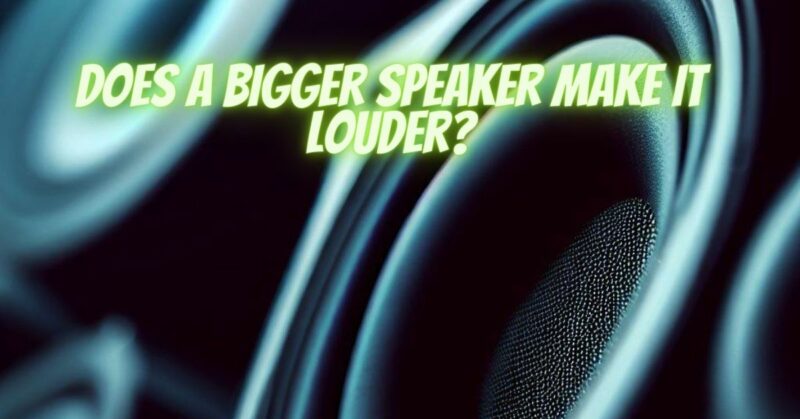The quest for loud and powerful sound has led many to wonder: Does a bigger speaker make it louder? This question often arises in discussions about audio equipment and speaker selection. In this article, we will delve into the complex relationship between speaker size and volume, shedding light on the factors that determine a speaker’s ability to produce loud and clear sound.
Understanding Speaker Size
The size of a speaker typically refers to the diameter of its main driver, which is responsible for producing the majority of the audio frequencies. Common sizes include 6.5 inches, 8 inches, 10 inches, 12 inches, and even larger drivers. However, it’s essential to recognize that speaker size is just one factor among many that influence a speaker’s performance.
Factors That Determine Speaker Volume
While speaker size can have an impact on volume, several other factors play a more significant role in determining a speaker’s loudness and overall performance:
- Power Handling: A critical factor is the speaker’s power handling capability, measured in watts. A speaker’s power handling rating indicates how much electrical power it can handle without risking damage. A speaker with a higher power handling rating can handle more significant amplifier power, potentially leading to greater volume.
- Efficiency (Sensitivity): Speaker sensitivity, measured in decibels (dB), represents how efficiently a speaker converts electrical power into sound. More sensitive speakers require less amplifier power to achieve the same volume as less sensitive ones. A higher sensitivity rating can result in louder sound with the same amplifier.
- Amplifier Power: The amplifier’s power output is a crucial factor in determining how loudly a speaker can play. A powerful amplifier can drive a speaker to higher volumes, provided the speaker can handle the increased power.
- Enclosure Design: The speaker’s enclosure or cabinet design plays a significant role in its performance. Well-designed enclosures can enhance the speaker’s ability to produce lower frequencies and overall volume. For example, a bass reflex or ported enclosure can improve low-frequency response and volume.
- Frequency Range: The speaker’s frequency range affects the perception of volume. Speakers that reproduce a broader range of frequencies, particularly lower frequencies, may appear louder to the human ear because they cover more audible sound.
- Driver Quality: The quality and design of the speaker’s driver (cone, voice coil, and magnet assembly) impact its ability to produce clean and clear sound at higher volumes. High-quality drivers are less likely to distort when pushed to their limits.
- Room Acoustics: The acoustic properties of the room in which the speaker is placed can influence the perceived volume. Room size, shape, and furnishings can affect sound reflections and absorption, which can either amplify or dampen the sound.
While speaker size does play a role in determining volume, it is just one of several factors that influence a speaker’s loudness and overall performance. A bigger speaker can potentially move more air and produce lower frequencies, contributing to a perception of greater volume. However, it is crucial to consider other factors like power handling, efficiency, amplifier power, and enclosure design when evaluating a speaker’s ability to produce loud and clear sound.
Ultimately, achieving high volume and impressive sound quality requires a balance between these factors. The best speaker for your needs may not necessarily be the largest but rather the one that aligns with your intended use, the space you have available, and your preference for sound characteristics. Understanding the complexity of speaker performance factors will help you make informed decisions when choosing audio equipment.


